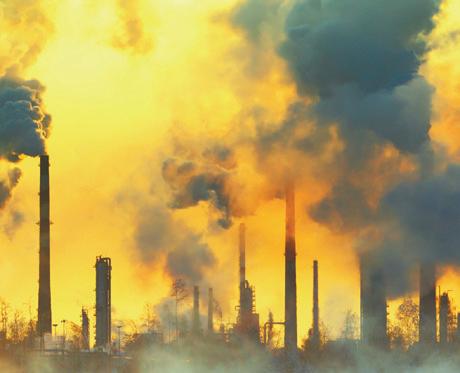
4 minute read
Climate Change It's time to talk about it
By Drew Monkman & Jacob Rodenburg
Until recently, we could count on nature as a place of stability, offering the same wonderful experiences year in and year out. Sadly, as we’ve seen more than ever in recent months, this stability can no longer be counted on. All of us need to acknowledge, talk about, and engage with the elephant in the room: climate change.
Advertisement
As educators, we feel it’s absolutely necessary that kids have an understanding of how and why the climate is changing, so they have both knowledge and emotional resilience to help them cope with the worsening climate impacts that are coming. A wonderful general resource for everything concerning kids and climate can be found at forourkids.ca.
How to talk about climate change

Children may already be anxious or have misconceptions about climate change, hence the need to talk about it. The following guidelines are recommended in an article by Daisy Simmons at yaleclimateconnections.org.
1. These conversations are appropriate for children of all ages. Yes, it may seem difficult, but it’s no different from talking about things like divorce or death. You simply find ways to do so.
2. Ask them what they already know. It’s likely more than you think.
3. Brush up on the basic science ahead of time. Later, you and your child can learn together with resources like NASA’s interactive Climate Kids website at climatekids.nasa.gov. You can also use the ‘Climate Change 101’, next page.
4. Acknowledge climate feelings of sadness and anxiety. Assure your child that these are normal and help inspire solutions.
5.Give kids reasons for hope and ways to take action. Be sure to acknowledge the challenges, however. Mention what actions your family is taking, but stress that individual action won’t be enough. Point out inspiring examples of collective solutions already happening in your community and beyond, like new solar arrays or political and corporate initiatives.
6. On-going conversations are essential. Our knowledge of both climate impacts and solutions is changing almost daily. Refer to websites such as dailyclimate.org.
7. Consider doing some climate-related activities like those below. Take part as a family in public climate events. If you have older children, watch documentaries together like ‘Breaking Boundaries’ on Netflix. Excellent children’s books on climate change include The Tantrum that Saved the World by Megan Herbert and Earth Heroes by Lily Dyu.
Climate change 101 for kids
Climate change describes a change in the typical weather for a region—such as temperatures and rainfall—over 30 years or more. Scientists have found that the Earth is warming up very quickly. This is because there are now more gases in the Earth’s atmosphere like carbon dioxide (CO2) that trap heat from the Sun, just like the glass roof of a greenhouse does.
By far, the biggest cause of climate change is humans burning fossil fuels like oil, gas, and coal. Here’s why. All plants and animals contain carbon. When they die, they often get buried in the ground. Over a very long time, their underground remains can turn into fossil fuels full of carbon. When we burn these fuels, the carbon goes into the air as an invisible gas called CO2.
The earth’s climate has changed before but never this quickly. Our planet’s average temperature has already gone up by two degrees Fahrenheit (1.2 Celsius). This might not sound like much, but the impacts are huge. It is causing more extreme heat, floods, and wildfires and is melting glaciers and sea ice. This is making life more difficult for humans, along with Earth’s plants and animals. People all over the world are working hard to stop the climate from heating up even more. For more information, go to climatekids.nasa.gov.
Some climate activities
The following activities not only help connect kids to nature, but they include an element of climate action and learning. Detailed instructions are easy to find online. A favourite resource of ours is pathwayproject.ca.
• Make and maintain a bird feeder. Bird populations will be greatly affected by climate change.
• Butterflies like monarchs are also vulnerable. To help them cope, design and plant a pollinator garden with species such as milkweeds. Fall is a great time to plant.
• Make a terrarium. When you add a tight-fitting lid, it has its own mini-climate—just like a greenhouse. You’ll find detailed instructions on the NASA website.
• Make and decorate Christmas cards on the theme of climate change. Send them to friends and family. Include a personal message about feelings and hopes for the future.
• Celebrate Halloween by wearing "naturized" costumes. Attach natural objects like pine needles and twigs with leaves to costumes or even dress up as a climate-vulnerable animal.
• Research and then plant a tree that will thrive in a warming climate. Kids love this activity. It leads to great climate conversations.
• Go for a nature hike and collect conifer needles, cones, colourful leaves, and tree seeds and nuts for a fall nature table. Discuss how are forests are changing.
Remind children that the natural world is part of their “family,” not simply a resource. Use the language of wonder when exploring. Find out who resides in your own “neighbourwood.”











